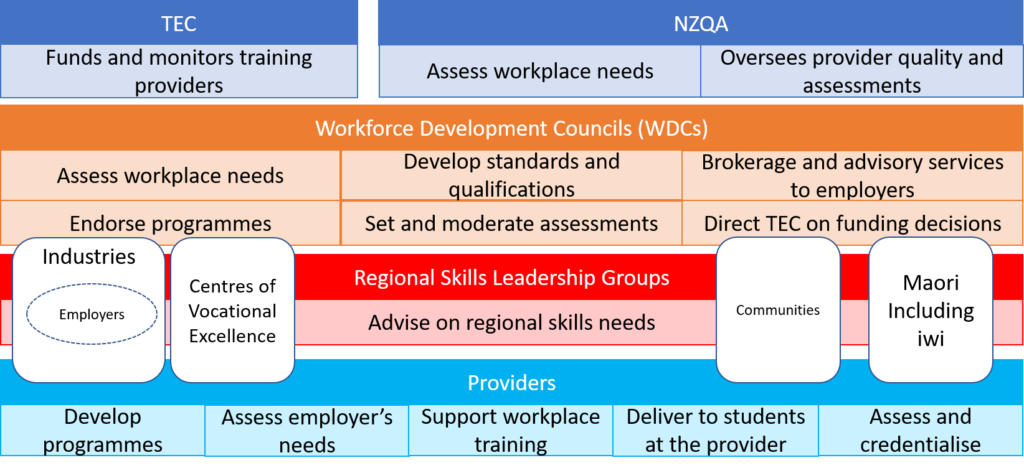Kia ora koutou,
The year is racing by and while the Reform of Vocational Education (RoVE) has been keeping us busy, we are very happy with the direction of current developments, both in terms of the reforms and the continued growth of Infrastructure trainees and apprentices.
Our Transition Plan was submitted to the Tertiary Education Commission (TEC) last month following extensive feedback from employers, industry partners and training providers. As I am sure you are aware, we have proposed a shift of our Arranging Training functions into Te Pūkenga. Our Standard Setting functions will transition into Waihanga Ara Rau Construction and Infrastructure Workforce Development Council (CIWDC).
A huge thank you to everyone who took time to provide feedback during this consultation. Your input enabled us to create a plan we believe puts Infrastructure in the best position to benefit from the reforms, providing a strong industry voice and retaining the skills and expertise of the Connexis team.
Myself and my counterpart at Comeptenz, Fiona Kingsford, presented our Transition Plans to the TEC Programme Board in late May, where they were positively received. The feedback from the Programme Board was that they were filled with confidence that the first transitions were well planned and that the positive and proactive approach of the “first mover” Transitional Industry Trianing Organisations (TITOs) will smooth the way for other TITOs to follow.
We have been invited to present to the TEC Board for final approval later this month.
Meanwhile, our core business continues to thrive. Yet more funding for both Infrastructure and vocational learning in the latest Budget are adding further impetus to strong growth in trainee numbers, especially in the central North Island. We are not only relying on organic growth however and we continue to invest in lifting the profile of our industries to leverage the current market factors, improving access to vocational learning, and providing better support to learners throughout their training.
We all approach change differently. Given this, we are conscious of providing the right support to our people through the second half of this year. While we are confident there is room for every one of our skilled and committed staff in the new system, we are all aware change will start to occur in the third quarter of 2021 and the way we work together will be different.

Change is coming. We are excited to be taking advantage of all the opportunities it brings, and mindful that we want to bring all of our people along on the journey with us.
Kia ora rawa atu,
Kaarin Gaukrodger
Chief Executive
WDCs gear up for Day One
The WDCs were first announced in 2019. Since then, there has been a lot of work happening behind the scenes but limited news about these important bodies that are soon to take on the Standard Setting (SS) functions of transitioning ITOs. However, the six WDCs have been passed into law and will come into effect on or about Friday 11 June.
What is Standard Setting?
Standard Setting means:
- setting standards,
- developing qualifications,
- helping shape the curriculum,
- moderating assessments,
- endorsing programmes, and
- advising employers.
It is one of the two main functions of TITOs; the other being Arranging Training, which includes:
- developing programmes,
- signing up employees,
- ensuring learner progression,
- assessing learners,
- organising off-job training, and
- supporting learners and employers.
WDC Orders in Council have passed
On 10 May, the WDCs were legally established. Connexis submitted on the Orders in Council for the CIWDC before they were passed and was successful in ensuring more specific references to “Construction and Infrastructure” in the Purpose Statement. We also triggered amendments to give a stronger focus to female representation on the Board.
Board appointments
The next step will be the appointment of the CIWDC Board. The CIWDC appointments committee, which is responsible for appointing members to the Governance Board, was established earlier in the year. There is good representation from the Infrastructure industries on the committee with Gillian Blythe (Water NZ), Sara Paris (McConnell Dowell) and Jeremy Sole (Etco), along with Shelley Katae and Paul Watson. We look forward to the announcement of the Board members.
Transition
The month of June will be a significant milestone for our people. They will be given an opportunity to feedback into the new organisational structures and from July there will be opportunities to apply for roles in the CIWDC and other WDCs both for SS and back office support functions. Anyone working in SS and back office for Connexis who does not transition into a WDC will be offered a similar role within Te Pūkenga.
Times of change can be difficult, and we will be helping our people through the transition, offering training, mentoring and support. From 1 September, Connexis’ SS team will begin shifting its emphasis to coordinating a transition to the CIWDC in time for 4 October. We are working towards a September timeframe for the shift of our Arranging Training functions into Te Pūkenga. While transition will be a key focus, we will continue to progress any current projects as planned and ask for your understanding if response times are impacted at this time.
The messaging from the Government’s 2021 Wellbeing Budget, as well as the funding coming into vocational learning, reinforce our confidence that the new system will create more rather than fewer roles for our people.
Te Pūkenga partnerships promote industry input and broaden access to learning

Some of the reasons our employers preferred a transition of our Arranging Training functions into Te Pūkenga is the potential to put learners at the centre and to give industry more input into training. These were both points our industry partners indicated were important to them under the new system.
We are already starting to see Te Pūkenga deliver on its potential through two recent announcements.
In April, a partnership between Te Pūkenga and Energy Academy was announced. Instigated by local electricity distribution company Orion, the agreement is for a pilot of a new training model which brings together the knowledge from both industry and education to respond to future skills needs.
It will include micro-credentials that integrate coaching and mentoring from industry practitioners to provide access for learners to skilled professionals from throughout New Zealand.
It is exciting to see the Energy Academy, one of our key industry partners, involved so early in the new system. This partnership aligns well with the Electricity Supply Industry Workforce Development project we are currently working on, as part of the COVID recovery funding aligned to the CIWDC. More information will be coming out on this work shortly.
A month later, Te Pūkenga signed a Memorandum of Understanding (MoU) with Te Wānanga o Aotearoa (TWoA) to improve access to training for skills-based vocations and attract under-represented groups into the trades. Under the agreement, any Arranging Training functions transferred from TITOs to Te Pūkenga could be delivered by the two organisations together, or could be transferred from Te Pūkenga to TWoA to deliver, under consultation and agreement with industry.
We look forward to more opportunities for collaboration to promote the aims of RoVE as the reform progresses.
Find out more about the partnership between Te Pūkenga and Energy Academy
Beyond Standard Setting and Arranging Training

There are two parts of the new vocational education system which sit outside TITO transitions but which will play important roles in the overall success of the reform.
Regional Skills Leadership Groups (RSLGs)
RSLGs are based and led in 15 regions with the aim of informing government activities and decisions for addressing skills needs around the country. They also influence local initiatives which impact their local workforce supply, including careers advisors and employer/ school connections. They are not aligned to any one particular industry but rather pinpoint workforce needs across industries and employers.
The groups publish Local Insights Reports and will eventually develop Regional Workforce Plans, projecting future labour supply needs.
Centres of Vocational Excellence (CoVEs)
The purpose of CoVEs is to create clear career pathways by strengthening links with industry and communities, supported by a future-focussed vocational education system. They will work closely with Workforce Development Councils, Regional Skills Leadership Groups, and Te Pūkenga to drive innovation and excellence in vocational education.
The Construction CoVE (ConCOVE) was one of the first to be established, along with a Primary Sector CoVE. The scope and coverage of future CoVEs could be defined by industry, occupation, or by type of delivery, for example kaupapa Māori, online learning, or foundation education.
Assessor RoVE Forums well received
Last week we held three RoVE Forums for our assessors and moderators. Our assessors and moderators are a key part of our industry training operation and it is important they remain engaged in the system and understand their services will continue to be required as we move through the RoVE reform. It was also a chance for us to discuss the current NZQA consultation on simplifying qualifications and credentials.
The Forums were well attended with almost 50 assessors and moderators taking part.
Understandably, there was a lot of interest in how assessors and moderators will fit into the new system following TITO transitions. Feedback from attendees suggests a real appreciation of our efforts to keep them updated.
Giving certainty during this period of change is something we hope will instil confidence in our people. We also provide RoVE updates at each of our regular Assessor Forums, of which 130 of our assessors have already attended this year, and we will continue to keep the lines of communication open.



